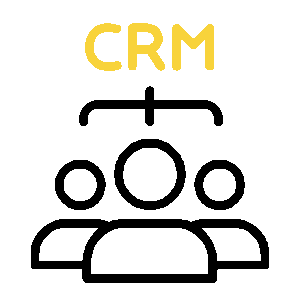Why Rebrand?
If you’ve been pondering whether your business needs a makeover—a rebrand—it’s crucial to understand the why behind it and how it can impact your business’s trajectory.
A rebrand is really not something to take lightly. The decision to rebrand will have implications on your business so weighing the cost versus benefit is absolutely critical. We’ll get into those implications and benefits later. But let’s start with the why–why should you consider a rebrand?

Evolution and Growth:
Businesses evolve over time. What started as a small startup might now be catering to a global market. Your brand identity should reflect where your business is heading, not just where it’s been.

Repositioning:
Perhaps your target audience has shifted, or there’s new competition in the market. A rebrand can help realign your brand perception with the expectations of your current and future customers.

Outdated Image:
Trends change, and what was once cutting-edge can quickly become stale. A rebrand ensures your brand stays contemporary and resonates with customers today.

Mergers & Acquisitions:
When companies merge or acquire others, a unified brand identify helps streamline operations and present a cohesive image to customers.

Reputation:
If your brand has faced challenges or negative perceptions in the past, a rebrand can signify a fresh start and help rebuild trust.
Challenges Ahead?
When approaching branding, it’s important to consider every angle, including potential challenges that may arise. Let’s talk through some of the obstacles you may face during the rebranding process and how you can minimize their impact.
- Internal Alignment: Rebranding isn’t just external; it also impacts your internal culture. It provides an opportunity to align your employees with the updated brand values and mission, fostering pride and motivation. A clear, consistent brand identity can unify teams across different departments or locations. Internal alignment during rebranding is often challenging due to resistance to change among employees who may be attached to the current brand identity and uncertain about the reasons for change. This resistance can stem from a lack of understanding about how the rebrand aligns with the company’s strategic goals or fits with existing culture. Operational adjustments required by the rebrand, such as updating procedures and communication channels, can also contribute to confusion if not effectively communicated. Clear and consistent internal communication, engaging employees early in the process, and ensuring leadership buy-in are crucial to overcoming these challenges. By fostering understanding, involvement, and alignment throughout the organization, businesses can mitigate resistance and build internal support for the new brand identity, ultimately enhancing the success of the rebranding effort.
- Operational Changes: A rebrand often involves updating marketing materials, signage, packaging, and digital assets. This operational change requires coordination across various departments to ensure a seamless transition and consistent brand experience for customers. It’s important to develop a manageable and realistic brand rollout strategy to minimize adding stress to your teams and setting realistic expectations.
- Financial Considerations: While rebranding can lead to long-term benefits, it also involves initial financial investments in design, marketing, and communications. Businesses should budget accordingly and consider the potential return on investment from increased brand equity and customer loyalty.
- Risk Management: Rebranding carries risks, such as alienating existing customers who were loyal to the old brand or confusion in the marketplace if the transition is not managed effectively. Mitigating these risks requires research, careful planning, communication, and stakeholder engagement.
Benefits of Rebranding
Rebranding isn’t just about a new logo or a trendy color palette (though those are important too!). It’s a strategic overhaul that can breathe new life into your business:

Enhanced Visibility and Recognition:
A strong, cohesive brand identity makes your business more memorable and easier for customers to recognize and relate to.

Improved Customer Relationships:
A well-executed rebranding can strengthen emotional connections with your audience, fostering loyalty and advocacy.

Competitive Edge:
In a crowded marketplace, standing out is crucial. A rebrand can differentiate your brand from competitors and attract new customers who resonate with your new identity.

Internal Alignment:
A rebranding effort often involves aligning internal culture with external brand values, fostering pride and motivation among employees.

Opportunities for Growth:
A refreshed brand opens doors to new markets, partnerships, and opportunities that may not have been accessible with your previous identity.
Considering a Rebrand? Here's Your Guide:
Get a FREE hardcopy of our Brand Audit Workbook. We’ve put together a comprehensive Brand Audit Workbook that dives deep into the process, from assessing your current brand to crafting a compelling new identity. This guide is your roadmap to navigating the intricate world of branding transformations.
To receive your free Workbook, simply provide us with your mailing address, and we’ll ship it off to you–completely free! Whether you’re a startup looking to make a splash or an established business seeking to reignite your brand’s spark, this guide will equip you with the insights and strategies needed to embark on a successful branding journey.
Remember, branding isn’t just about changing your look—it’s about defining your story, connecting with your audience in meaningful ways, and setting the stage for continued success in an ever-evolving market landscape.
Because in the end, it’s not just about changing your brand—it’s about shaping its future.

Get your FREE hardcopy Brand Audit Workbook
Aloide is recognized as a top branding agency is South Dakota by DesignRush. You can view more helpful branding articles on their blog.

